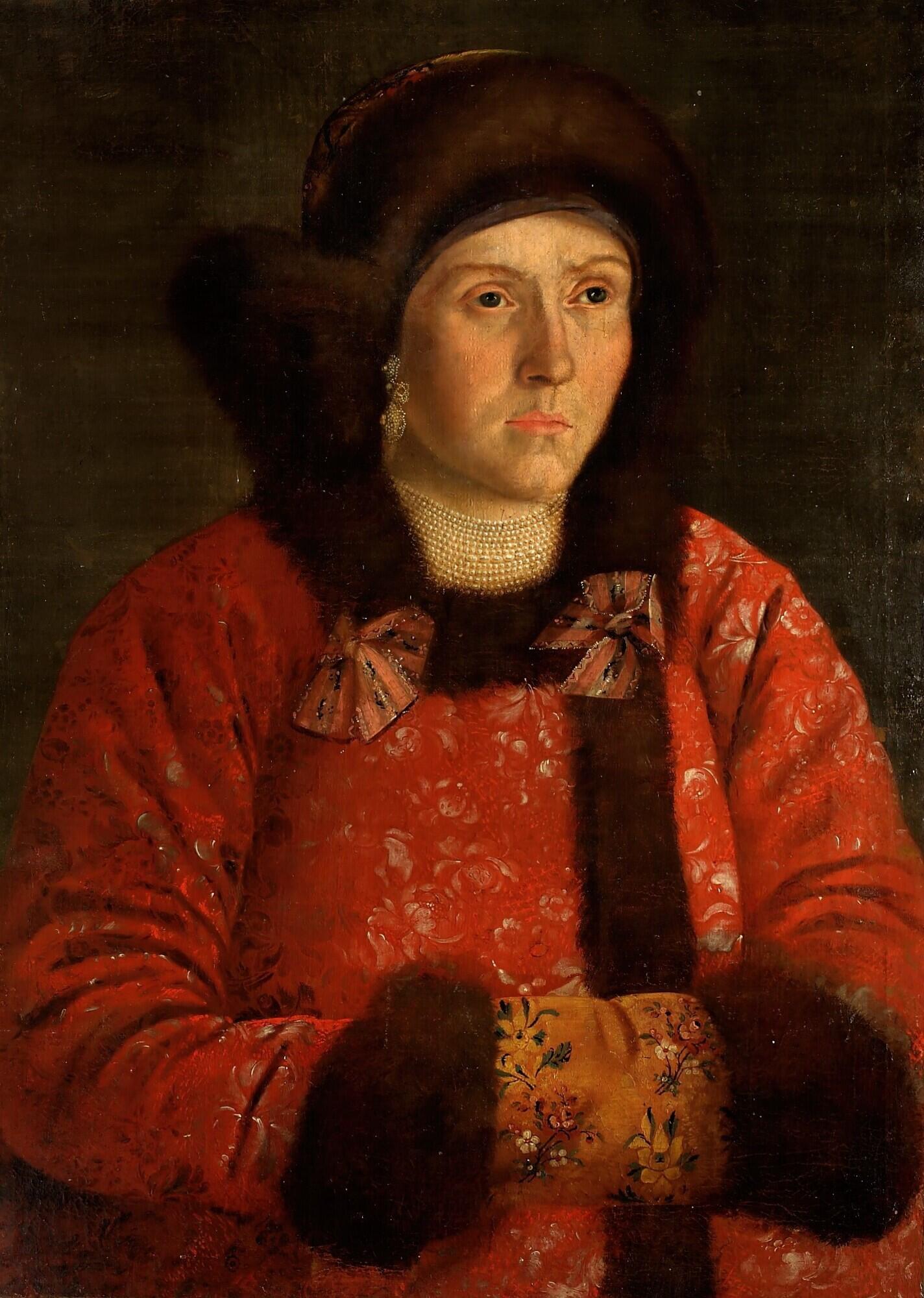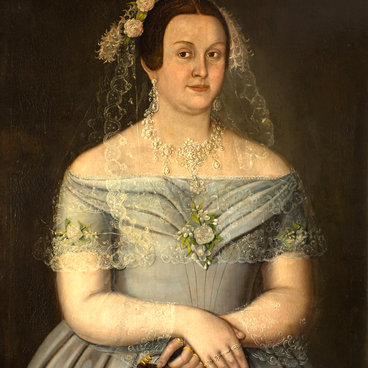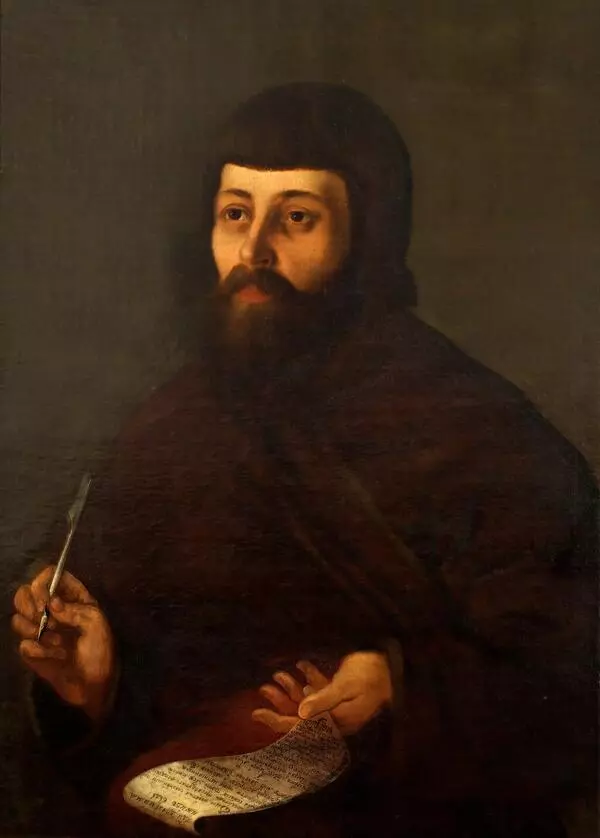In Uglich, like in other county towns and even governorate cities, portrait painting became widespread rather late. While teams of muralists and icon painters worked in numerous churches, there were extremely few secular artists in the provinces. However, in the late 18th century, Sergey Flegontov, the sexton of St. Nicholas Church near the Sukhoy Pond, who specialized in religious painting, created two portraits of the Kochurikhin family of merchants. Later, the family gallery was continued in the first half of the 19th century by the famous Uglich portraitist Ivan Vasilyevich Tarkhanov.
Flegontov painted the portrait of the merchant Kochurikhin and his wife Fyokla. A son of “confirmed dissenters”, Fyodor Kochurikhin turned to the official Orthodox Church and married Fyokla in a church in violation of Old Believer traditions. These significant and expressive portraits seem to confirm that the choice was right. In these portraits, Flegontov imitated the images of by-standing saints from religious painting. Instead of facing the viewer, as in later portraits, the spouses turn to the source of light that is located somewhere above and between them. Fyokla is depicted wearing colorful winter clothes (although the portraits were painted in April 1785), with the ornamented red fabric, fur hat, and muff painted in detail. Perhaps, these clothes had a special meaning for Fyokla Kochurikhina — for example, they might have been part of her “full wedding clothes”, including festive outerwear. Ethnographers classify a large fur hat as ceremonial clothing which served to wish and attract wealth and many children.
The couple got married several years before the portraits were created, but the event was particularly important for them and was therefore eternalized in painting. Unfortunately, Fyokla Petrovna was destined to become a widow. She outlived her husband by many years, contributed greatly to the business affairs of her son, and ran the large house built by her husband on the left bank of the Volga until the end of her life.
Flegontov painted the portrait of the merchant Kochurikhin and his wife Fyokla. A son of “confirmed dissenters”, Fyodor Kochurikhin turned to the official Orthodox Church and married Fyokla in a church in violation of Old Believer traditions. These significant and expressive portraits seem to confirm that the choice was right. In these portraits, Flegontov imitated the images of by-standing saints from religious painting. Instead of facing the viewer, as in later portraits, the spouses turn to the source of light that is located somewhere above and between them. Fyokla is depicted wearing colorful winter clothes (although the portraits were painted in April 1785), with the ornamented red fabric, fur hat, and muff painted in detail. Perhaps, these clothes had a special meaning for Fyokla Kochurikhina — for example, they might have been part of her “full wedding clothes”, including festive outerwear. Ethnographers classify a large fur hat as ceremonial clothing which served to wish and attract wealth and many children.
The couple got married several years before the portraits were created, but the event was particularly important for them and was therefore eternalized in painting. Unfortunately, Fyokla Petrovna was destined to become a widow. She outlived her husband by many years, contributed greatly to the business affairs of her son, and ran the large house built by her husband on the left bank of the Volga until the end of her life.



